With its deep magenta color and rich, silky texture, this beetroot cured salmon is as elegant as it is effortless.
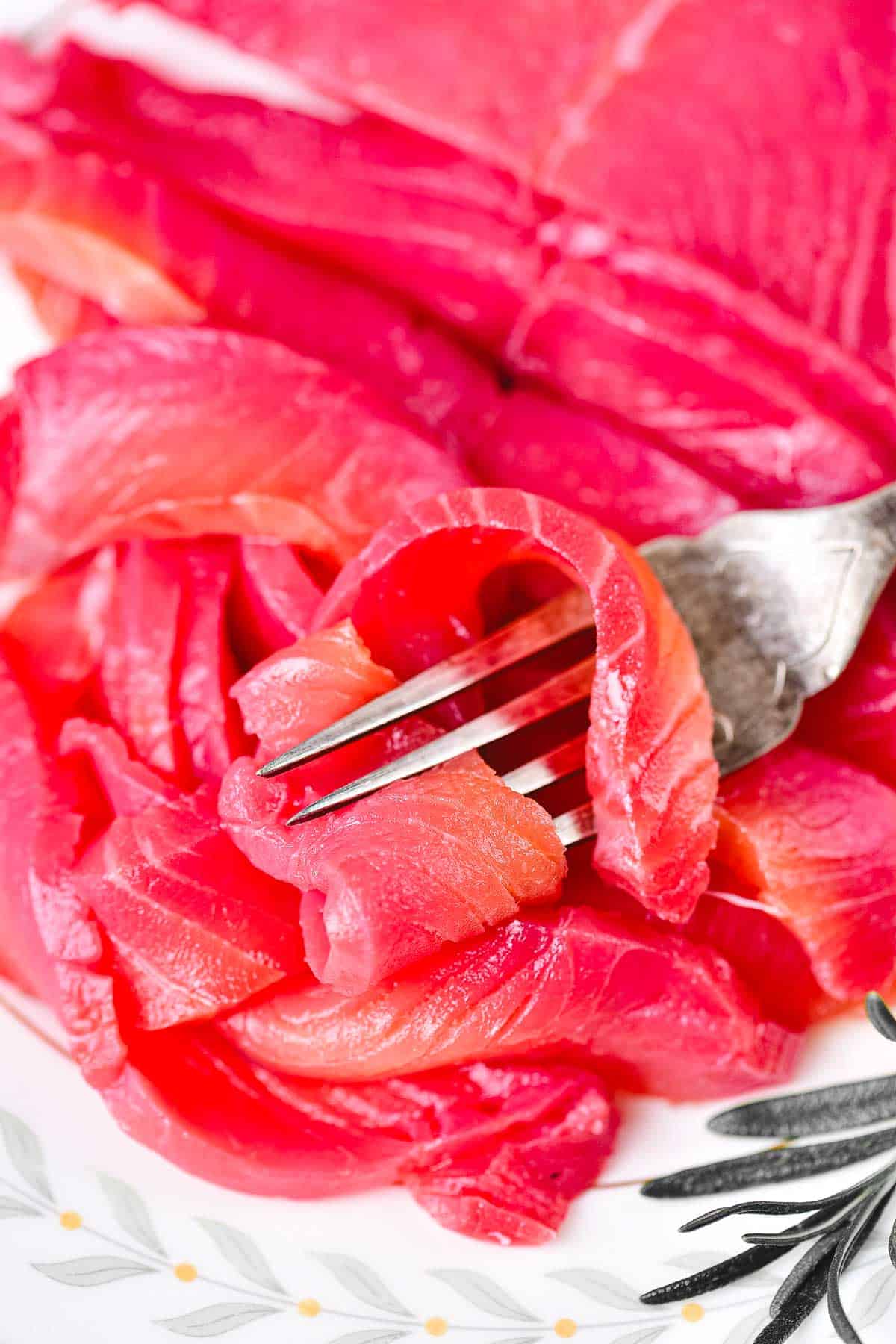
Passover always felt like a week outside of time. The kitchen smelled different, the table was set with dishes that only made an appearance once a year, and every meal carried the weight of tradition.
Some things were constants, matzo crumbs scattered across the table, the warmth of matzo ball soup on a cool spring night, the slow, deliberate reading of the Haggadah that stretched on long past my childhood patience. And always, there was fish.
I don’t remember the first time I ate gefilte fish, but I do remember the first time I tried to avoid it. It was always there, sitting on a platter between the hard-boiled eggs, chopped liver and the bowls of matzo ball soup, pale and unassuming, topped with a dollop of fiery pink horseradish.
My sister, who has the most unique taste, had no hesitation, she ate it happily, declaring it one of her favorite parts of the meal. I, on the other hand, hesitated. Maybe it was the jelly-like layer clinging to each slice, maybe it was the fact that it came from a jar. Either way, I took the smallest possible bite and chased it with matzo, hoping no one would notice.
Some years, though, there was cured salmon. Thinly sliced, buttery, and just salty enough. That, I could get behind. It felt celebratory, special, like the kind of thing that belonged at a holiday table.
So when it came time for me to contribute to the Seder meal, I knew I wanted to make something with salmon. Something rooted in tradition, but with a twist that made it feel fresh. Something that, like the fiery horseradish on gefilte fish with beet, would bring vibrancy to the table in both color and taste.
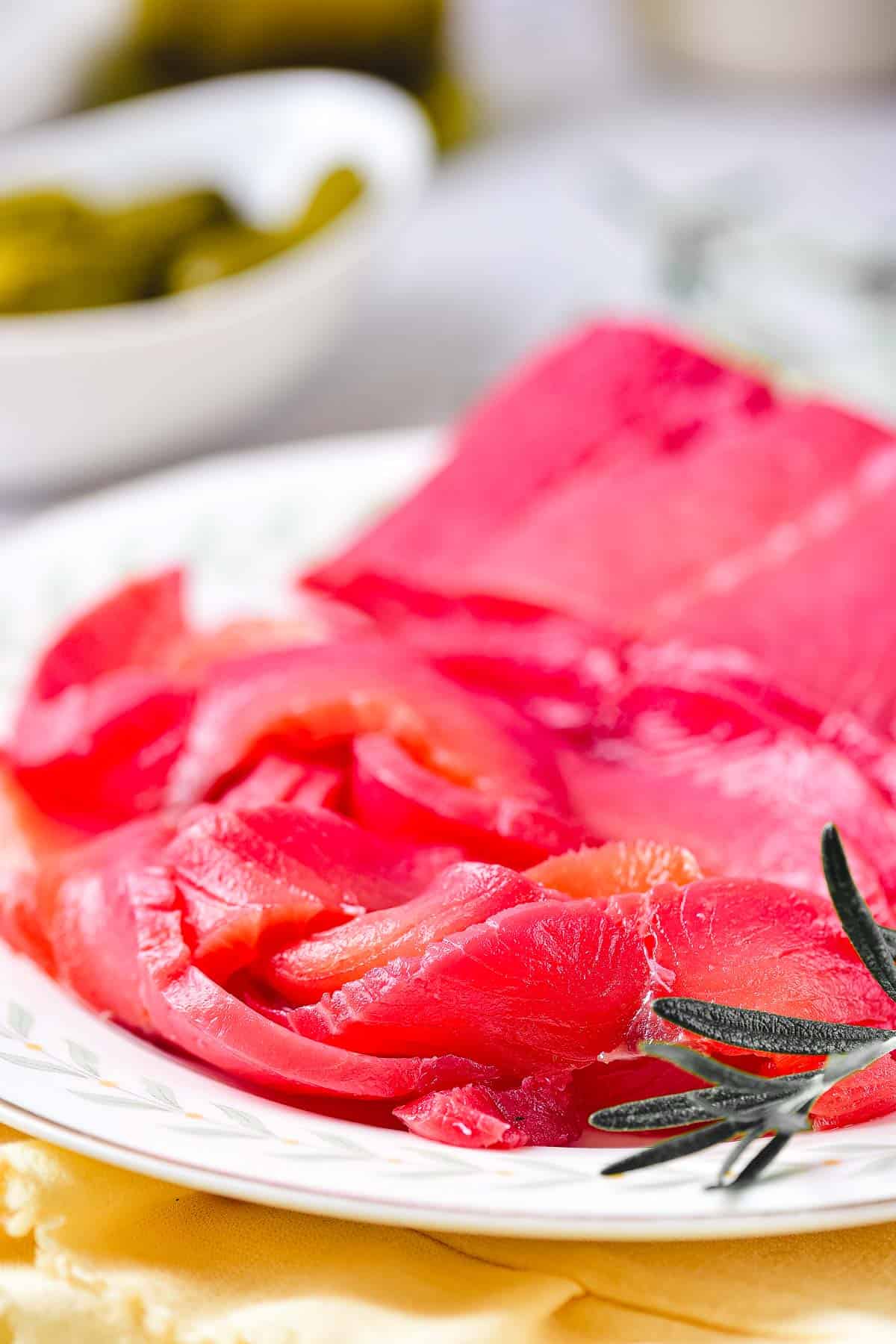
A New Tradition in Vibrant Colors
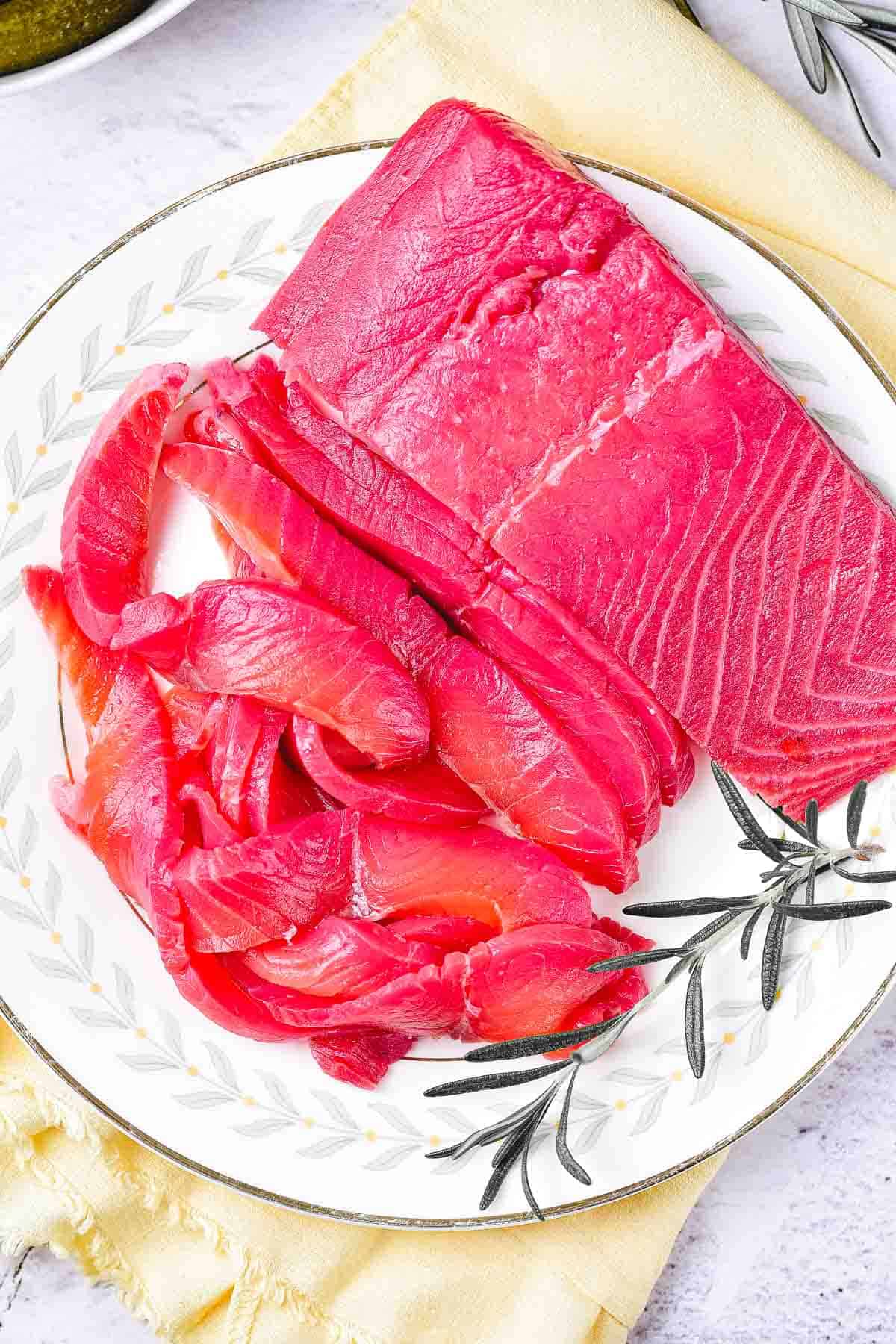
Salmon has always been my favorite fish. I thought about the sharp, magenta horseradish we spooned onto our fish each year, its color staining everything it touched.
What if, instead of just pairing beets with fish, I let them infuse the salmon itself? A slow cure, packed in salt, sugar, and grated beets, could transform it into something vibrant and bold, something that felt celebratory.
I grated beets until my hands were stained red, mixed them with just enough salt and sugar to draw out the moisture, then packed the mixture around the salmon and let time work its magic. Two days later, I unwrapped it to find the color had seeped deep into the flesh, turning the edges jewel-toned and rich.
Each slice carried a stunning contrast—the rich magenta edges melting into warm coral at the center, with a texture so silky it nearly draped over the knife.
When I brought it to the table, I wasn’t sure how it would be received. Passover traditions run deep, and change isn’t always welcome. But as the first bites were taken, I saw familiar nods of approval, the quiet hum of appreciation that signals something good. Plates were passed, slices disappeared, and just like that, beet-cured salmon became part of our Seder table.
It’s a small thing, but it feels right. Something old and something new, side by side. There’s still matzo ball soup, still candlelight flickering against wine-stained pages, still the same stories told year after year. But now, among them, there’s salmon. And that, too, is part of the tradition.
Ingredients

- Salmon – A good-quality, fatty salmon fillet makes all the difference here. The curing process draws out moisture while concentrating flavor, leaving the fish silky and rich. I always choose wild-caught when possible—the deeper color and firmer texture hold up beautifully to curing. If using farmed salmon, make sure it’s from a trusted source with high-fat content.
- Rock Salt – Curing is all about balance, enough salt to pull moisture from the fish but not so much that it overwhelms. Rock salt works best because of its texture; it distributes evenly without dissolving too quickly. Kosher salt works as a substitute, but avoid table salt, it’s too fine and can make the fish overly salty.
- Horseradish - Freshly grated horseradish is ideal, but jarred works in a pinch—just avoid anything with too many additives.
- Coriander - Coriander adds a light, citrusy warmth that rounds out the flavors. If you don’t have coriander, a pinch of fennel seed or a bit of orange zest can bring a similar brightness.
See the recipe card for full list and exact quantities.
How to Make This Beetroot Cured Salmon Recipe
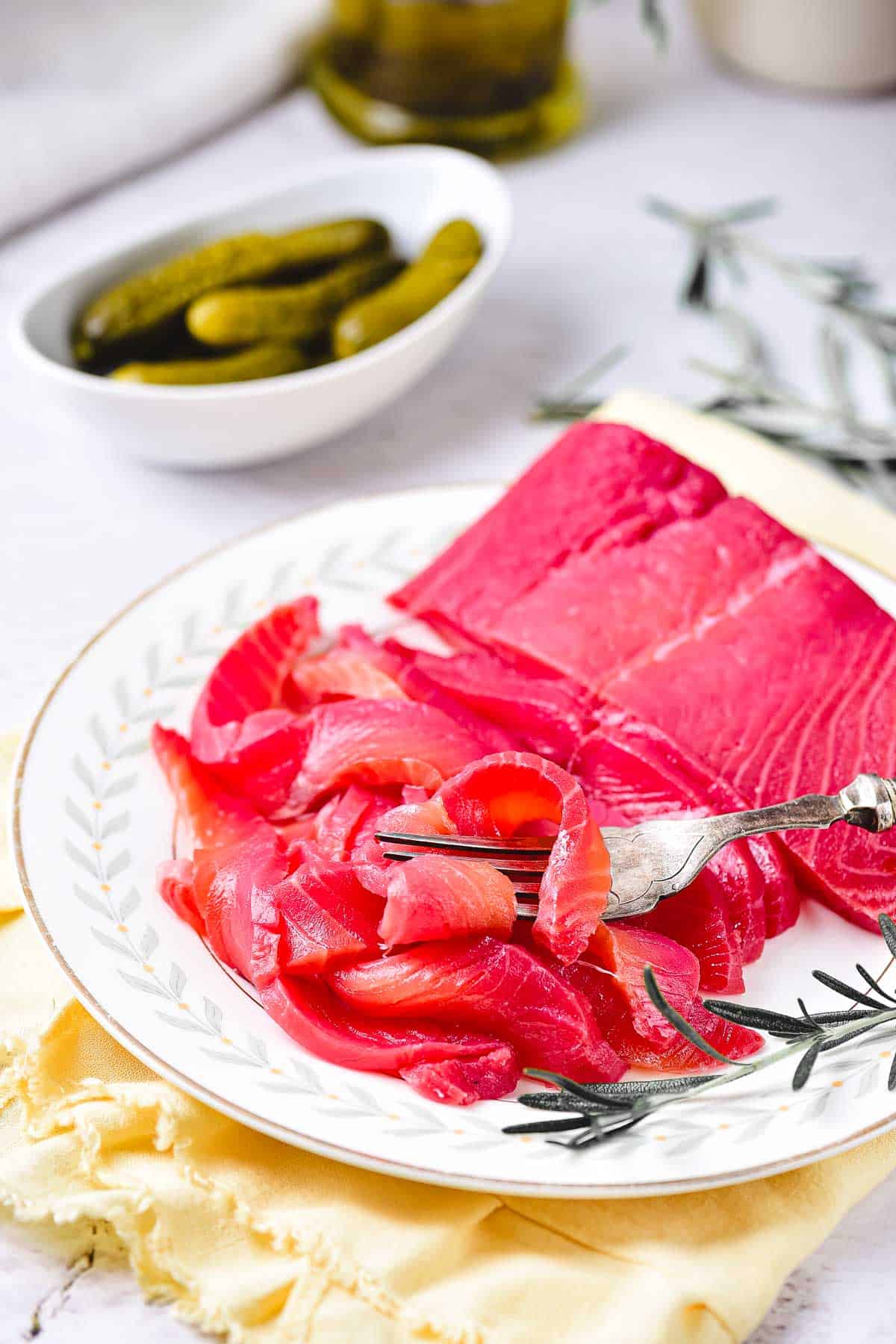
This beetroot-cured salmon is a stunning addition to any Passover table—vibrant, flavorful, and effortlessly elegant. The curing process requires little hands-on time, but patience is key. As the beets and seasonings slowly infuse into the salmon, they transform it into something silky, rich, and deeply colored.
Prepare the Beet Cure

In a blender or food processor, combine the grated beets, rock salt, powdered sugar, horseradish, coriander, white pepper, and dried herbs. Process for 30–60 seconds until the mixture forms a smooth, uniform paste. It should be thick and spreadable, almost like a coarse jam.
Set Up the Curing Container
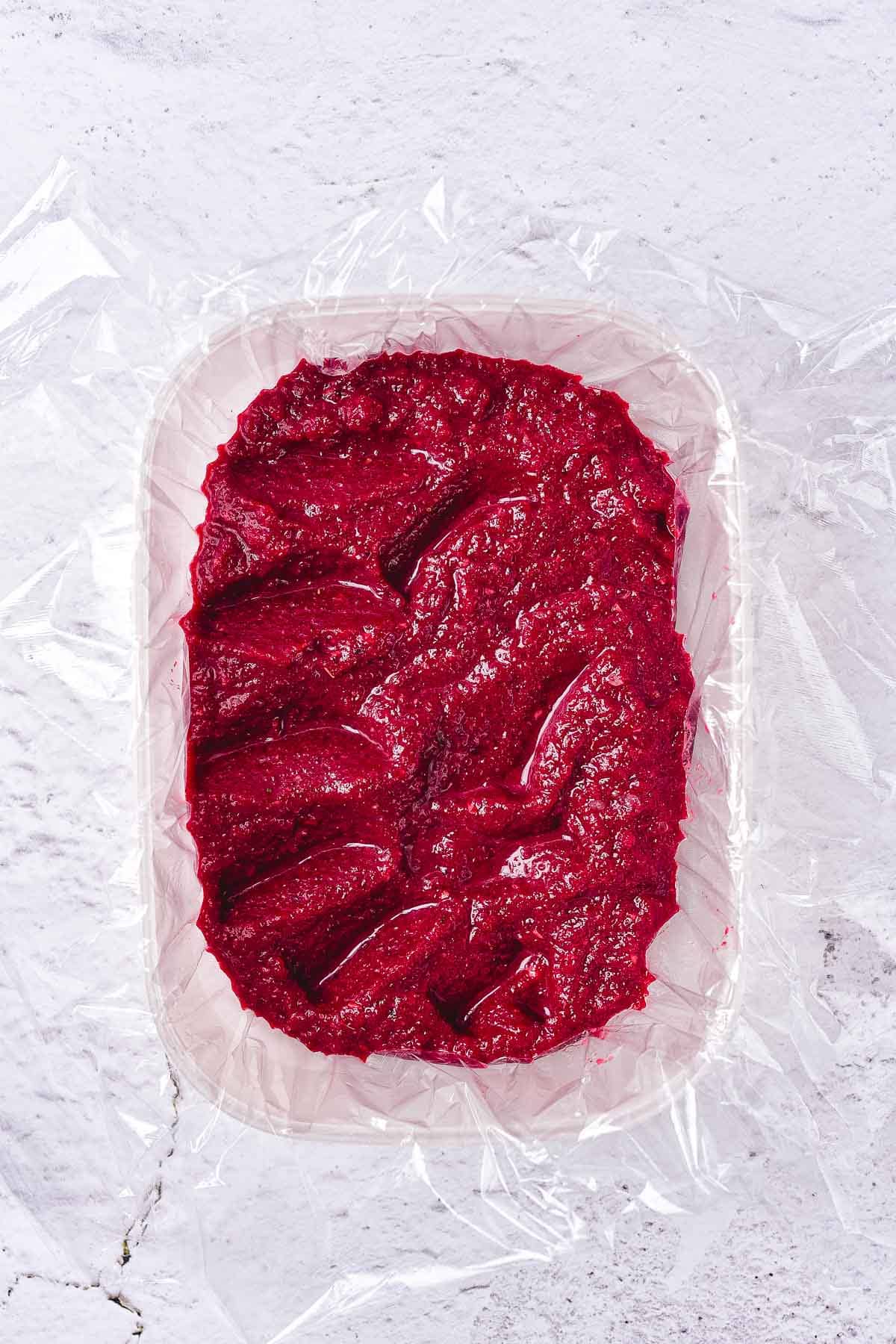
Line a shallow dish or container with plastic wrap, leaving plenty of overhang on the sides. This will make it easier to wrap the salmon later. Spread the beet mixture evenly across the bottom, creating a bed for the fish.
Prepare the Salmon
Rinse the salmon fillet under cold water and pat it completely dry with paper towels. Removing excess moisture helps the cure work more effectively. Place the salmon on top of the beet mixture, skin-side up, pressing it down gently to ensure even coverage.
Wrap and Cure
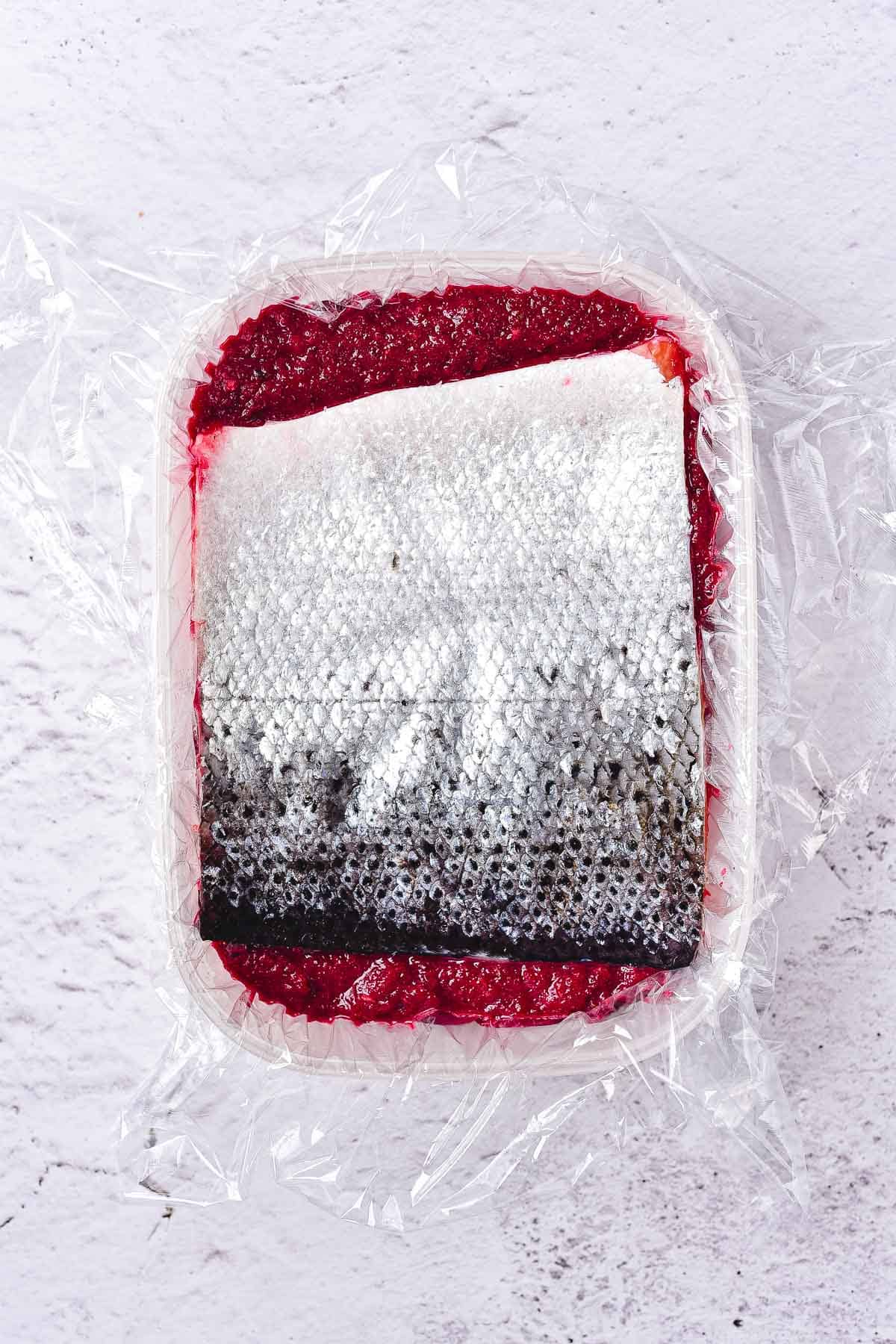
Fold the overhanging plastic wrap tightly over the salmon, ensuring it’s fully enclosed. If needed, add another layer of plastic wrap to keep everything secure. Place the wrapped fish in the refrigerator, then weigh it down with a small plate or a can to help the cure penetrate evenly. Let it sit for 48 hours, flipping the salmon over once halfway through.
Unwrap and Rinse
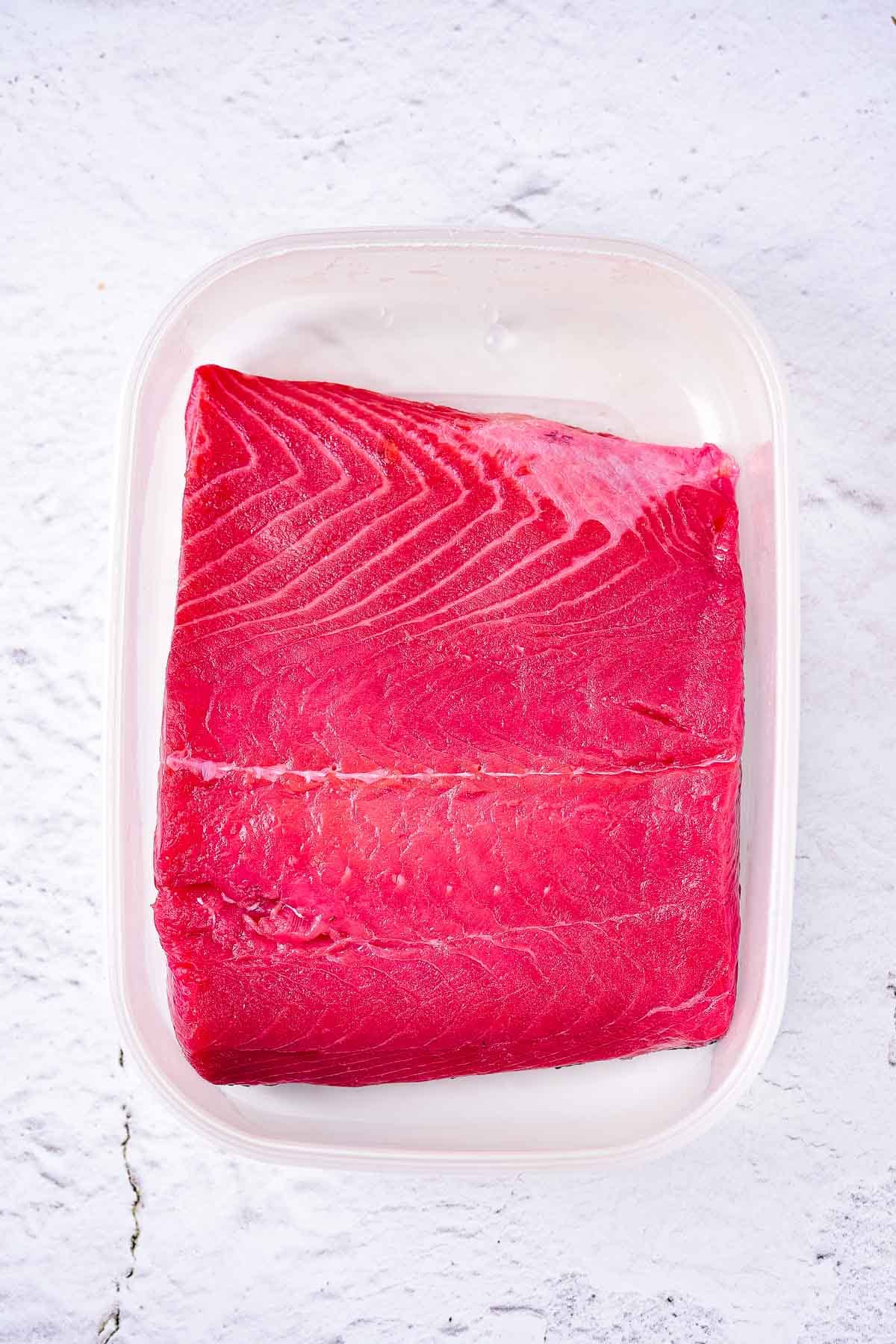
After two days, unwrap the salmon and scrape off as much of the beet mixture as possible. Rinse the fillet thoroughly under cold water, making sure to remove all remaining cure. Pat it completely dry with paper towels.
Slice and Serve

Using a sharp knife, slice the salmon thinly on a slight angle. The edges should be a deep magenta, fading into bright coral toward the center. Serve as part of your Passover spread, alongside matzo, fresh herbs, and a touch of horseradish.
Storage

You can store your beetroot cured salmon in an airtight container, layering them between sheets of parchment or wax paper to keep them from sticking together. Kept in the fridge, they’ll stay fresh for up to three days.
For longer storage, you can freeze the cured salmon. Wrap the whole piece (or individual slices) tightly in plastic wrap, then place it in a freezer-safe bag or container. It will keep well for up to a month.
Top Tips
Top Tips
Grate First, Squeeze Second – beets hold a lot of moisture, and while their juice is what gives this salmon its vibrant color, too much liquid can make the curing process uneven. After grating the beets, give them a quick squeeze over the sink to release excess juice before mixing them with the salt and sugar. It’s a small step that makes a big difference in getting an even cure.
Press It Down – to get that silky, firm texture, make sure the salmon is evenly pressed while curing. A small baking dish placed on top will help the cure penetrate evenly. I once skipped this step in a rush, and the result was a cure that took longer than expected and had slightly uneven coloring. Lesson learned: gentle pressure works wonders!
Slice Thin, Slice Cold – for the best texture, always slice your cured salmon when it’s cold, straight from the fridge. A sharp knife (preferably with a long, thin blade) will glide through without tearing the delicate flesh. If your knife is dragging, wipe the blade with a damp towel between slices for cleaner cuts.
What to Serve With Beetroot-Cured Salmon

At our Seder, we always serve this beet gravlax alongside crisp matzo and a little dish of horseradish, but over the years, I’ve found that it shines just as much outside of Passover, too.
A plate of Marinated Beet Salad is always a good idea. The sweet, earthy beets echo the cure while adding a little bite, making each forkful feel balanced. If I’m craving something green, Ottolenghi-Inspired Air Fryer Asparagus is perfect—crisp, lemony, and easy enough to throw together while the salmon does its thing in the fridge.
For a brunch spread, I love pairing it with Berry Salad with Red Onions, Arugula, Nuts, and Pomegranate Arils. The bright fruit and peppery greens keep things fresh, and it all feels effortless. And when I want something more substantial, Chicken Marbella, with its mix of sweet and savory. It makes an unexpected but welcome companion. Whether it’s part of a Seder table or just a quiet Sunday brunch, this salmon always finds its place.
Recipe
Tried and loved this recipe? Please leave a 5-star review below! Your reviews mean a lot to me, so if you've got any questions, please let me know in a comment.
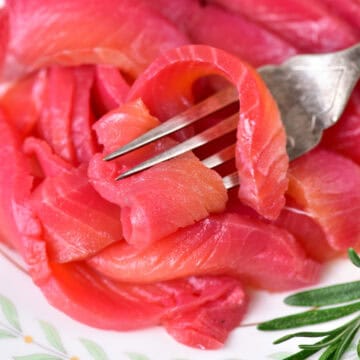
Beetroot Cured Salmon
Equipment
- Sharp Knife
Ingredients
- 1 lb salmon fillet skinless, boneless
- 1 cup grated beets
- 3 tablespoon rock salt
- 3 tablespoon powdered sugar
- 2 teaspoon horseradish freshly grated or jarred
- 1 teaspoon coriander
- ⅓ teaspoon white pepper
- ½ teaspoon dried herbs such as dill or thyme
Instructions
- In a blender or food processor, combine the grated beets, rock salt, powdered sugar, horseradish, coriander, white pepper, and dried herbs. Process for 30–60 seconds until the mixture forms a thick, spreadable paste.
- Line a shallow dish or container with plastic wrap, making sure there’s plenty of overhang. Spread half of the beet mixture evenly on the bottom.
- Rinse the salmon fillet under cold water and pat completely dry with paper towels. Place the salmon, skin-side up, on the beet mixture, pressing it down gently for even coverage.
- Spread the remaining beet mixture over the top of the salmon. Wrap the plastic wrap tightly around the fish, sealing it completely.
- Place in the refrigerator and weigh it down with a small plate or can to help the cure penetrate evenly.
- Let the salmon cure for 48 hours, flipping it over once at the 24-hour mark.
- After 48 hours, remove the salmon from the wrap and scrape off as much of the beet mixture as possible.
- Rinse the fillet thoroughly under cold water and pat dry with paper towels.
- Using a sharp knife, thinly slice the salmon at an angle. Serve with matzo, crackers, fresh herbs, or a touch of horseradish.







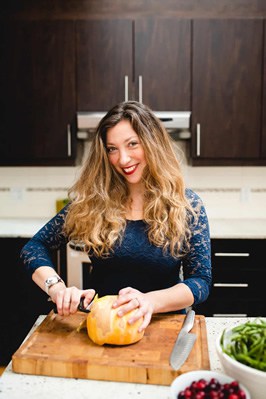
Tell Me What You Think!